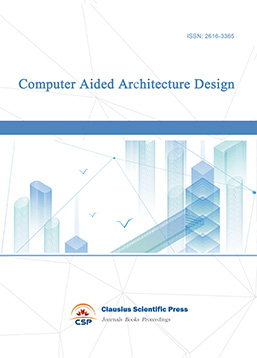Research on the Design Value and Influence of the Theme Park for Autistic Children from the Perspective of Social Aesthetic Education
DOI: 10.23977/jceup.2024.060119 | Downloads: 6 | Views: 96
Author(s)
Yiting Feng 1, Xiaohua Huang 1,2
Affiliation(s)
1 School of Design, Ningbo Tech University, Ningbo, 315100, China
2 Faculty of Innovation and Design, City University of Macau, Macau, 999078, China
Corresponding Author
Xiaohua HuangABSTRACT
This study focuses on the design value and application of theme parks for autistic children from the perspective of social aesthetic education. Through literature review, field investigation and case analysis, this paper summarizes the behavioral characteristics and psychological needs of autistic children. At the same time, combined with the specific requirements of Maslow's hierarchy of needs theory, this paper discusses the current situation, problems and design principles of theme parks for autistic children. It is proposed that design should integrate education, aesthetics, functionality, experience, inclusiveness and openness. This paper discusses the design value and application strategy of emotion, society, aesthetics and identity, summarizes the relevant data through specific analysis of practical cases, verifies the feasibility and effectiveness of the design concept, and proves the positive role of these strategies in improving the quality of life and social integration ability of autistic children. It provides theoretical support and practical reference for the design of autistic children's theme parks, which is conducive to jointly promoting the development and progress of autistic children's theme park design, and finally realizing the win-win situation of material wealth and spiritual wealth.
KEYWORDS
Social Aesthetic Education, Children with Autism, Theme Park, Design Value, Application StrategyCITE THIS PAPER
Yiting Feng, Xiaohua Huang, Research on the Design Value and Influence of the Theme Park for Autistic Children from the Perspective of Social Aesthetic Education. Journal of Civil Engineering and Urban Planning (2024) Vol. 6: 132-141. DOI: http://dx.doi.org/10.23977/jceup.2024.060119.
REFERENCES
[1] Wu Shengzhen, Wang Boxun, Deng Rui, etc. Study on the factors of urban built environment affecting the social behavior of autistic children .Furniture and interior decoration, 2022, 29 (04): 92-96.
[2] Zhang Zhenzhen, Lian Fuxin. The characteristics of social behavior of children with autism spectrum disorder in regular classes and its influence on peer relationship .China Special Education, 2020, (11): 34-41 + 48.
[3] Gong Ruyun, Mo Yuran. 'Happy Learning': Hierarchy, Value and Enlightenment .China Education Science (Chinese and English), 2023, 6 (06): 59-67.
[4] Shao Yi 'an. ' Self-healing planet ' -Interactive intervention treatment toy design and research for autistic children [D].Nanchang University, 2023.
[5] Wang Hongjiang, Zhang Tong. New Trends in Spatial Interactive Public Art Design for Children's Healing Environments. Public Art, 2019, (01): 62-67.
[6] Pan Luomin. An experimental study on the treatment of children’s autism by painting art-an open art studio-oriented intervention .Art design research, 2023, (05): 122-128.
[7] Yang Kaiyan.Using Art Therapy to Practice Children's Aesthetic Education - Comment on ' Aesthetic Education Practice: Action Research on Art Therapy Education ' .Journal of Shanxi University of Finance and Economics, 2022, 44 (03): 128.
[8] Yang Junyu, Zhao Mengyu, Liu Tong. A Ferris wheel community designed for autistic children .Urban Design, 2020, (02): 100-105.
[9] Zhang Yanzi. "Governance" and "healing" in individual, group and social contemporary art creation .Art Research, 2020, (05): 109-113 + 94-96.
[10] Wang Shuhua, Xue Jian. Construction of healing landscape spatial model based on future community health scenarios .Urban Development Research, 2022, 29 (08): 118-126.
| Downloads: | 3791 |
|---|---|
| Visits: | 107846 |
Sponsors, Associates, and Links
-
Journal of Sustainable Development and Green Buildings

-
Landscape and Urban Horticulture

-
Bridge and Structural Engineering

-
Soil Mechanics and Geotechnical Engineering

-
Journal of Municipal Engineering

-
Heating, Ventilation and Air Conditioning

-
Indoor Air Quality and Climate

-
Computer Aided Architecture Design


 Download as PDF
Download as PDF